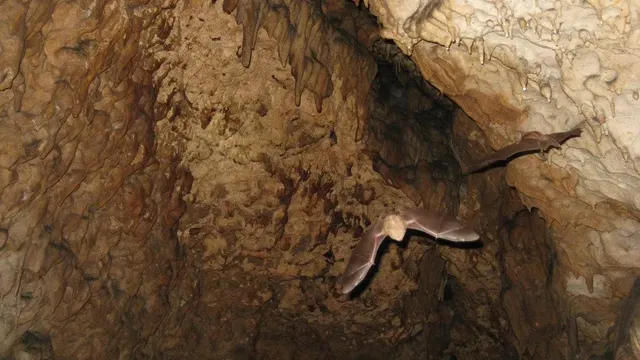Bats have a bad reputation. Myths, folk tales, and negative media coverage often link them to vampires or blame them for spreading diseases. Yet their populations are declining worldwide, and without them, ecosystems lose vital benefits such as pest control, pollination, and seed dispersal, CNN reported.
Rodrigo Medellín, senior professor of ecology at the National Autonomous University of Mexico, has devoted his life to changing the way people perceive these animals. His curiosity began at age 13, when he first held a bat in his hands. “That’s when I decided to dedicate my life to studying and protecting them,” he says. Since then, caves have been his happy place. “The peace, the darkness, the silence except for the squeaks of bats… I feel calm in a cave and try to convey that feeling to the people with me,” Medellín shares.
He participates in the Rolex Perpetual Planet initiative and has received numerous awards for his work. He is the founder of the Latin American Network for Bat Conservation and Global South Bats—an international network of scientists. There are over 1,400 species of bats, making up about one-fifth of all known mammals and representing the only mammals capable of true flight. They rely on highly developed echolocation to navigate and hunt at night, with some able to detect objects as small as a human hair.
Although some species live over 30 years, bats reproduce slowly—usually one pup per year—making population recovery difficult. “They are very mysterious. Many people fear them, attack them, or despise them. They are probably the most unfairly treated animals on Earth,” Medellín says.
In Western culture, bats are perceived as symbols of evil and darkness, mainly due to their associations with vampires. In Christian Europe, they were linked to devils, evil spirits, and witches. In Eastern cultures, however, they are considered symbols of luck and happiness. Perceptions worsened with the emergence of Covid-19, as some associated it with bats, even though “they are no sicker than your dog or cat. This is greatly exaggerated,” Medellín explains.
One of the most significant services bats provide is pest control. In northern Mexico, one species numbers up to 30 million individuals, which together consume about 300 tons of insects each night. They also disperse seeds over long distances, supporting forest regeneration, maintaining plant diversity, and sustaining the life cycles of many organisms. Bats are also key pollinators for crops like agave, used in tequila production.
However, their populations are threatened by human activity—habitat loss, wind turbines, pesticides, and white-nose syndrome, a fungal disease that causes severe damage. Many species are already listed as endangered. “Imagine what would happen if we lost bats overnight. Crops would be destroyed by insects, mosquito populations would rise—the way we live would change drastically,” Medellín warns.
He strives to convince people that bats are essential to their daily well-being and believes that greater awareness can transform fear into admiration. Through initiatives such as bat-friendly agave cultivation, migration tracking, and international conservation networks, Medellín protects bat populations and promotes their ecological role. “I give people facts, images, evidence—and they automatically fall in love with bats. Anyone who comes into contact with them begins to expand this knowledge,” he says. “And if someone is still afraid, I want to invite them to learn more. Bats will win your heart.” |BGNES

 Breaking news
Breaking news
 Europe
Europe
 Bulgaria
Bulgaria







